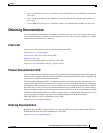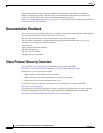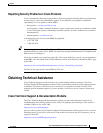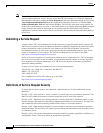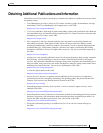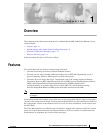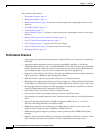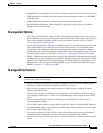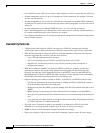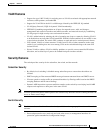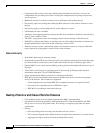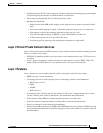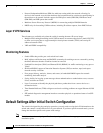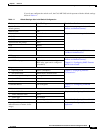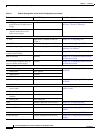
1-3
Cisco ME 3400 Ethernet Access Switch Software Configuration Guide
78-17058-01
Chapter 1 Overview
Features
• IGMP filtering for controlling the set of multicast groups to which hosts on a switch port can belong
• IGMP throttling for configuring the action when the maximum number of entries is in the IGMP
forwarding table
• IGMP configurable leave timer to configure the leave latency for the network.
• Switch Database Management (SDM) templates for allocating system resources to maximize
support for user-selected features
Management Options
• CLI—The Cisco IOS software supports desktop- and multilayer-switching features. You can access
the CLI either by connecting your management station directly to the switch console port or by using
Telnet from a remote management station. For more information about the CLI, see Chapter 2,
“Using the Command-Line Interface.”
• Cisco Configuration Engine—The Cisco Configuration Engine is a network management device that
works with embedded Cisco IOS CNS Agents in the switch software. You can automate initial
configurations and configuration updates by generating switch-specific configuration changes,
sending them to the switch, executing the configuration change, and logging the results. For more
information about using Cisco IOS agents, see Chapter 4, “Configuring Cisco IOS CNS Agents.”
• SNMP—SNMP management applications such as CiscoWorks2000 LAN Management Suite (LMS)
and HP OpenView. You can manage from an SNMP-compatible management station that is running
platforms such as HP OpenView or SunNet Manager. The switch supports a comprehensive set of
MIB extensions and four remote monitoring (RMON) groups. For more information about using
SNMP, see Chapter 27, “Configuring SNMP.”
Manageability Features
Note The encrypted Secure Shell (SSH) feature listed in this section is available only on the cryptographic
versions of the switch software image.
• Support for DHCP for configuration of switch information (such as IP address, default gateway,
hostname, and Domain Name System [DNS] and TFTP server names)
• DHCP relay for forwarding User Datagram Protocol (UDP) broadcasts, including IP address
requests, from DHCP clients
• Directed unicast requests to a DNS server for identifying a switch through its IP address and its
corresponding hostname and to a TFTP server for administering software upgrades from a TFTP
server
• Address Resolution Protocol (ARP) for identifying a switch through its IP address and its
corresponding MAC address
• Unicast MAC address filtering to drop packets with specific source or destination MAC addresses
• Configurable MAC address scaling that allows disabling MAC address learning on a VLAN to limit
the size of the MAC address table
• Cisco Discovery Protocol (CDP) Versions 1 and 2 for network topology discovery and mapping
between the switch and other Cisco devices on the network (supported only on NNIs)
• Network Time Protocol (NTP) for providing a consistent time stamp to all switches from an external
source



